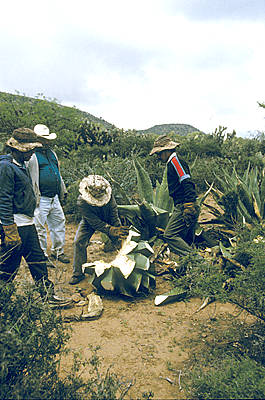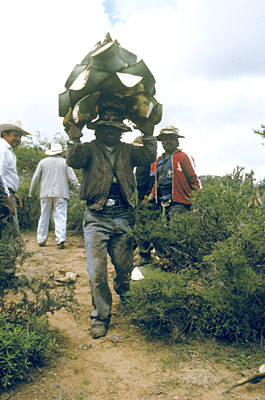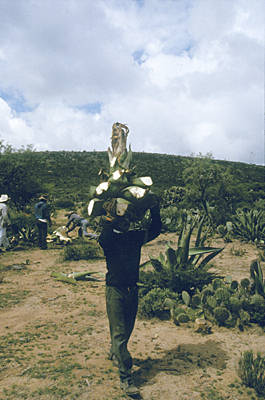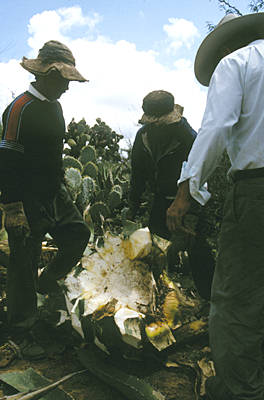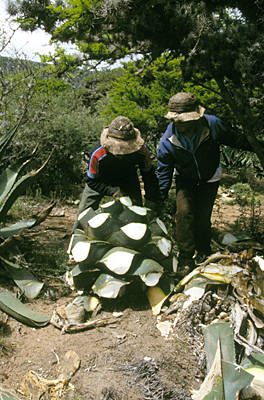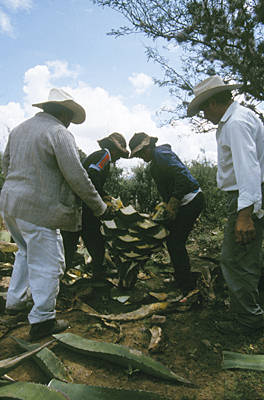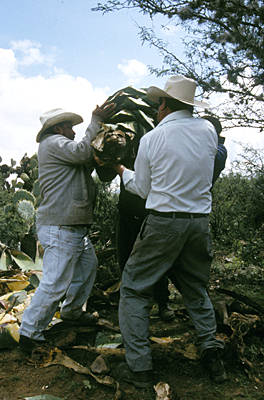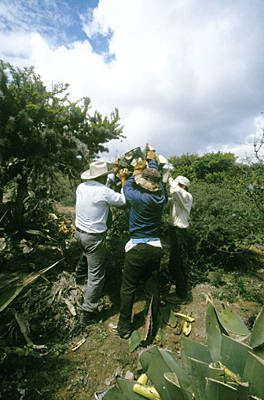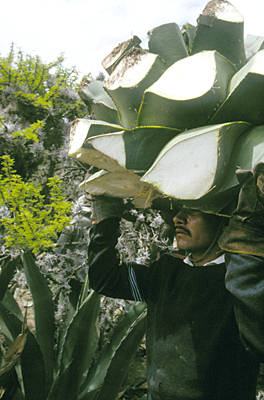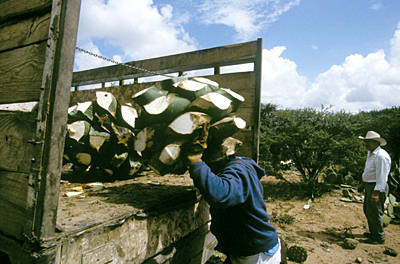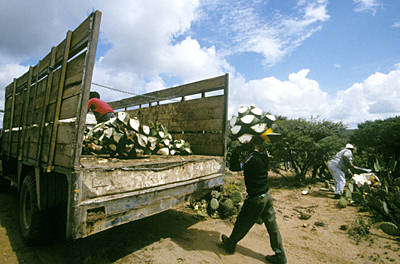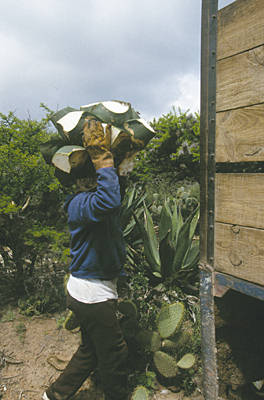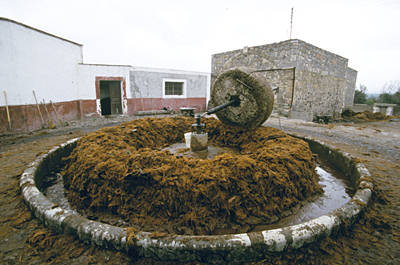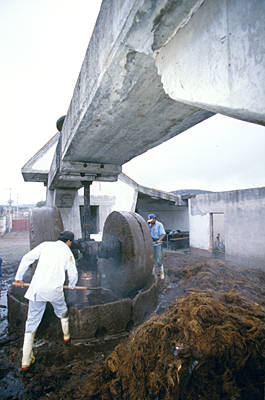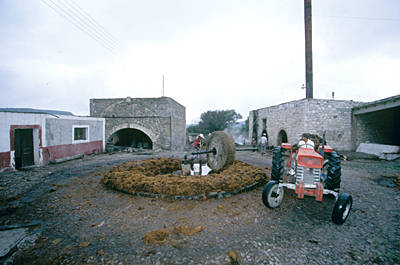Welcome to the elaboration process of the
Artisanal Mezcal
In the following we will present you a photo report about the elaboration of this very typical Mexican beverage. The Mezcal is the product of the fermentation of the Heart of the Agave plant or "maguey", as it is also frequently called in Mexico.
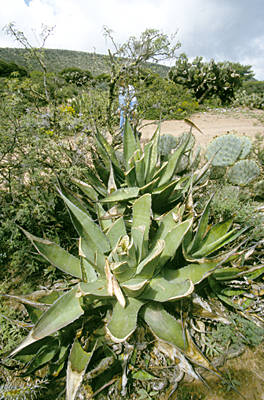 As you can see in this photo, the heart of the maguey has been cut. There are two reasons for doing so: one is to make the plant accumulate more water in its center and the second is to produce small plants or runners for the multiplication of the plant. These runners will be planted close to its mother plant, in order to become the plants of the future, and in this way, to provide raw material for tomorrow´s Mezcal.
As you can see in this photo, the heart of the maguey has been cut. There are two reasons for doing so: one is to make the plant accumulate more water in its center and the second is to produce small plants or runners for the multiplication of the plant. These runners will be planted close to its mother plant, in order to become the plants of the future, and in this way, to provide raw material for tomorrow´s Mezcal.
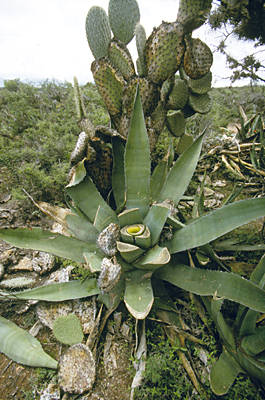
A Maguey cut in this way is also called "El Castrado" (The Castrated One). After growing during 8 or 9 years, the maguey´s fleshy leaves are cut in order to obtain "La Piña" (The Pineapple) which can reach a weight of up to 150 kgs.
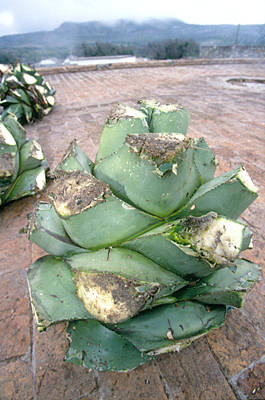
In the following photographs you can see the work of "La Carga" (The Carrying). The Píñas spread out over the whole field are collected by the carriers who carry them on their heads to the truck.
Among the field workers, this work is called "La Carga".
Up to four carriers are necessary to pick up one of the Piñas and put it on the head of the carriers.
Still walking and at some distance from the truck, the carriers throw the Piña on the truck´s platform where their colleagues start arranging them, in order to load the largest possible number of Piñas onto the truck.
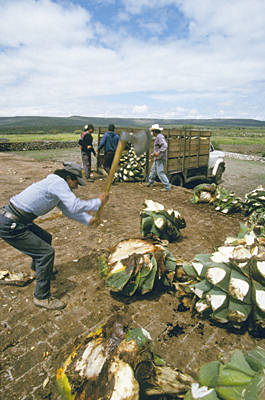
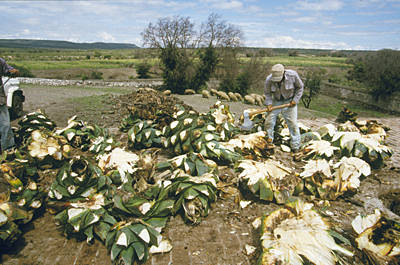
Above you can see the unloading of the truck. Immediately afterwards, the Piñas will be cut into quarters. This process is called "La Descuartizada" (The Quartering). These quarters of a Piña are put into so-called "Cajones" (Boxes) through the round hole in the roof of the building where these boxes are stored.
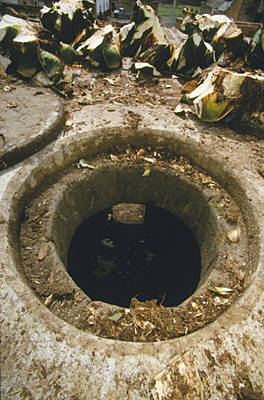
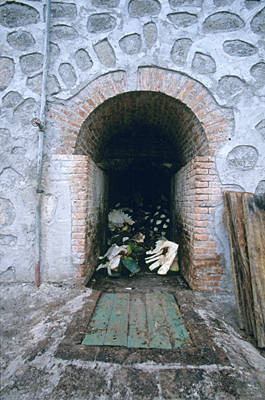
As soon as the boxes are filled, they will be sealed at their upper part and at the openings through which the cooked maguey will be taken out afterwards.
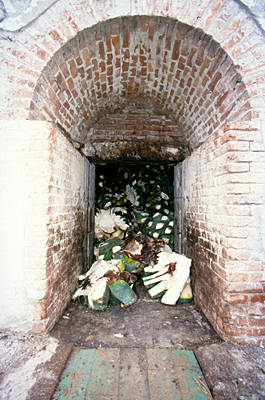
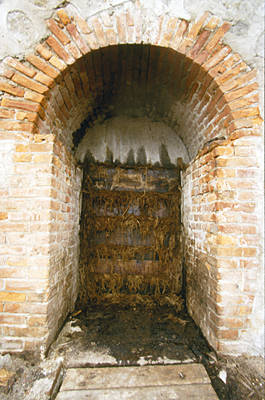
Photo of the Boiler in which the steam is generated which is used to cook the maguey.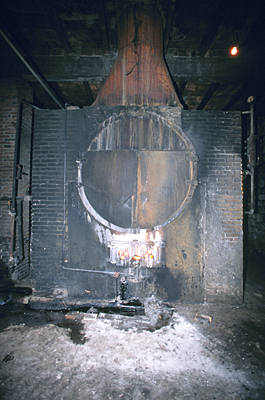
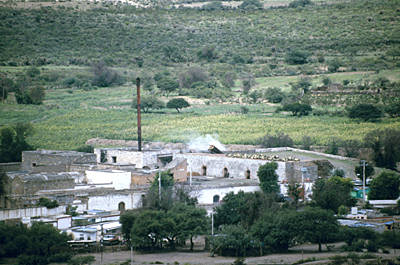
This is an air view of an antique Mezcal factory that still produces Artisanal Mezcal and in which we had the opportunity to learn about the whole elaboration process of the Mezcal.
As mentioned before, the maguey must be cooked in the boxes during 72 hours. Then it is removed from the box and put into the stone mills.
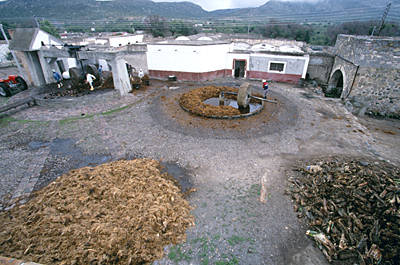
In this photo you can see two Mills: an antique one and a modern one. On the left side you can see the cooked maguey and on the right side the firewood for the Boiler. In the middle you can see the antique Mill and in the upper part the modern one.
In former times, the mill stones were pulled by two oxen.
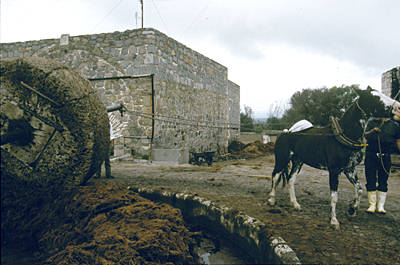
Here the mill stone is turning. It is moved several times over the cooked maguey. Nowadays a tractor is used to pull the stone.
The modern Mill turns around a central shaft which is driven by an electrical engine.
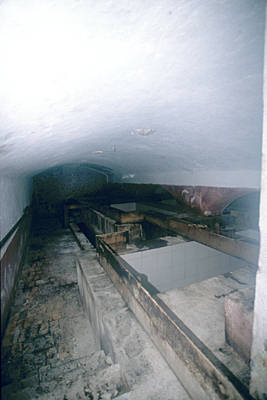
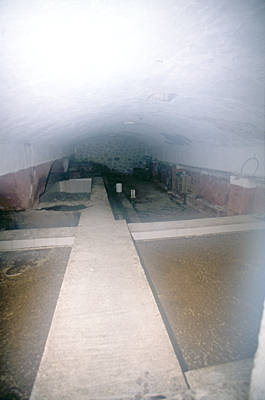
The juice which is expressed by the pressure of the mill stone flows to the fermentation tubs through a subterranean channel system. The juice must repose during 24 hours in order to ferment before being pumped to the Still.
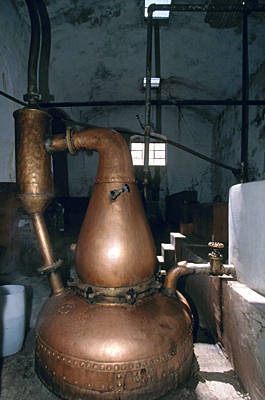
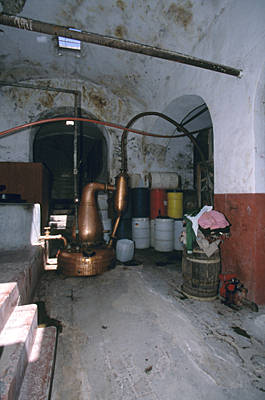
The distillation process is done by means of an antique copper Still which is heated with steam. After the Still, the alcohol in form of steam passes through the coil which is cooled in a tub filled with cold water in order to be finally collected in round tanks.
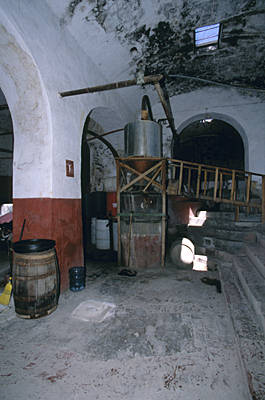
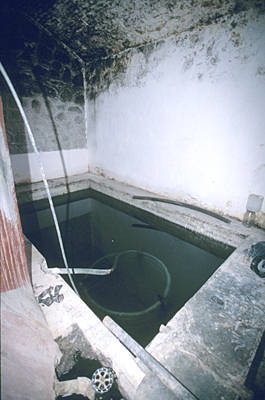
At the beginning of the distillation process the Mezcal has an alcohol content of about 80%, whereas at the end it reaches about 15%. The capacity of the Still is exactly the same as that of a fermentation tub. The distilled Mezcal is filled into white oak barrels in order to repose.
Fotografía y Texto: Rainer Ehlert
 As you can see in this photo, the heart of the maguey has been cut. There are two reasons for doing so: one is to make the plant accumulate more water in its center and the second is to produce small plants or runners for the multiplication of the plant. These runners will be planted close to its mother plant, in order to become the plants of the future, and in this way, to provide raw material for tomorrow´s Mezcal.
As you can see in this photo, the heart of the maguey has been cut. There are two reasons for doing so: one is to make the plant accumulate more water in its center and the second is to produce small plants or runners for the multiplication of the plant. These runners will be planted close to its mother plant, in order to become the plants of the future, and in this way, to provide raw material for tomorrow´s Mezcal.

